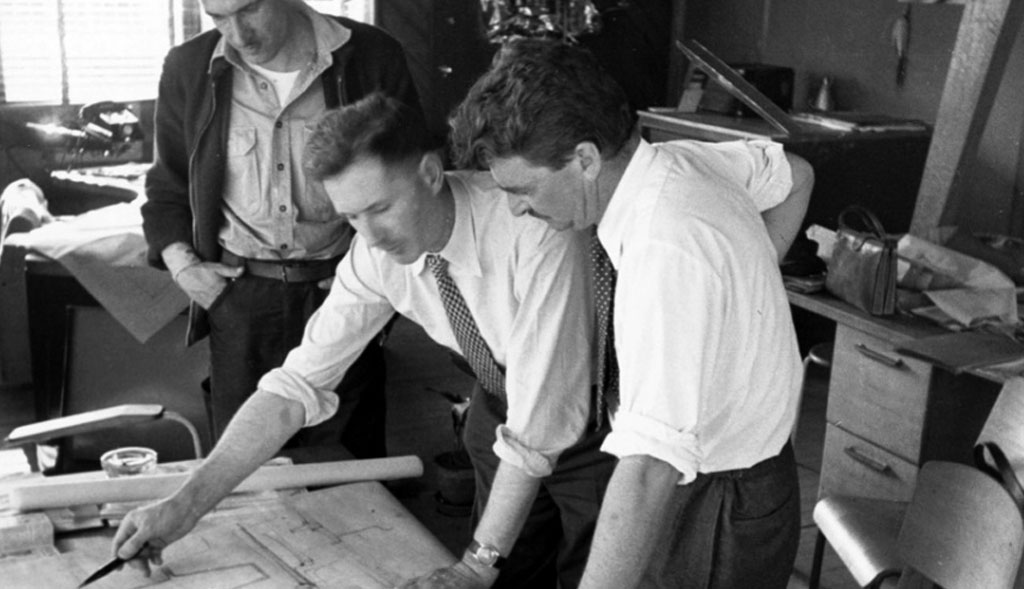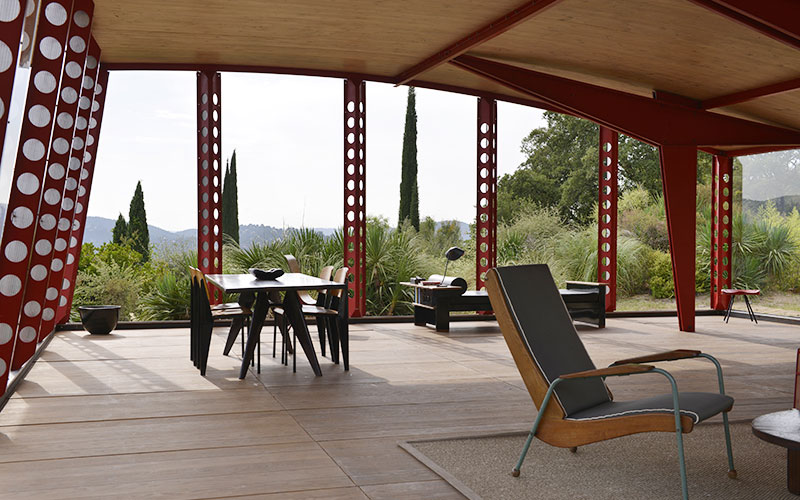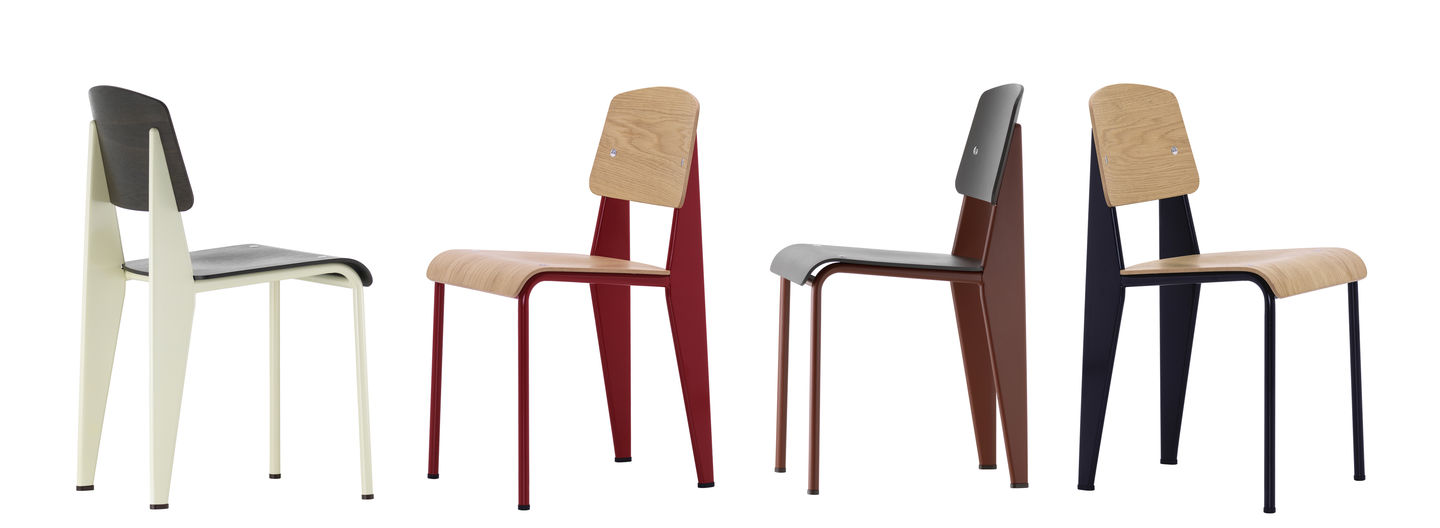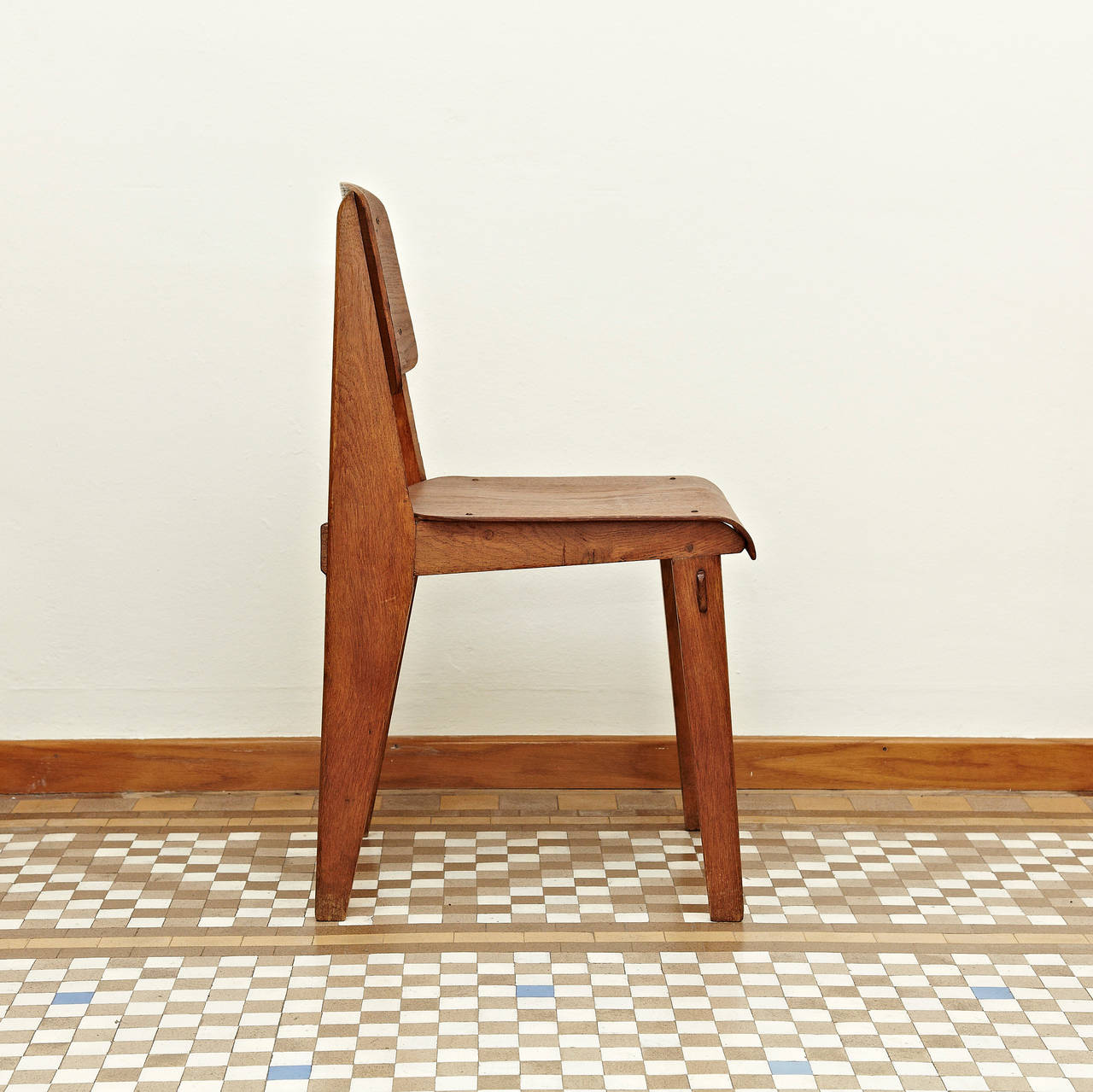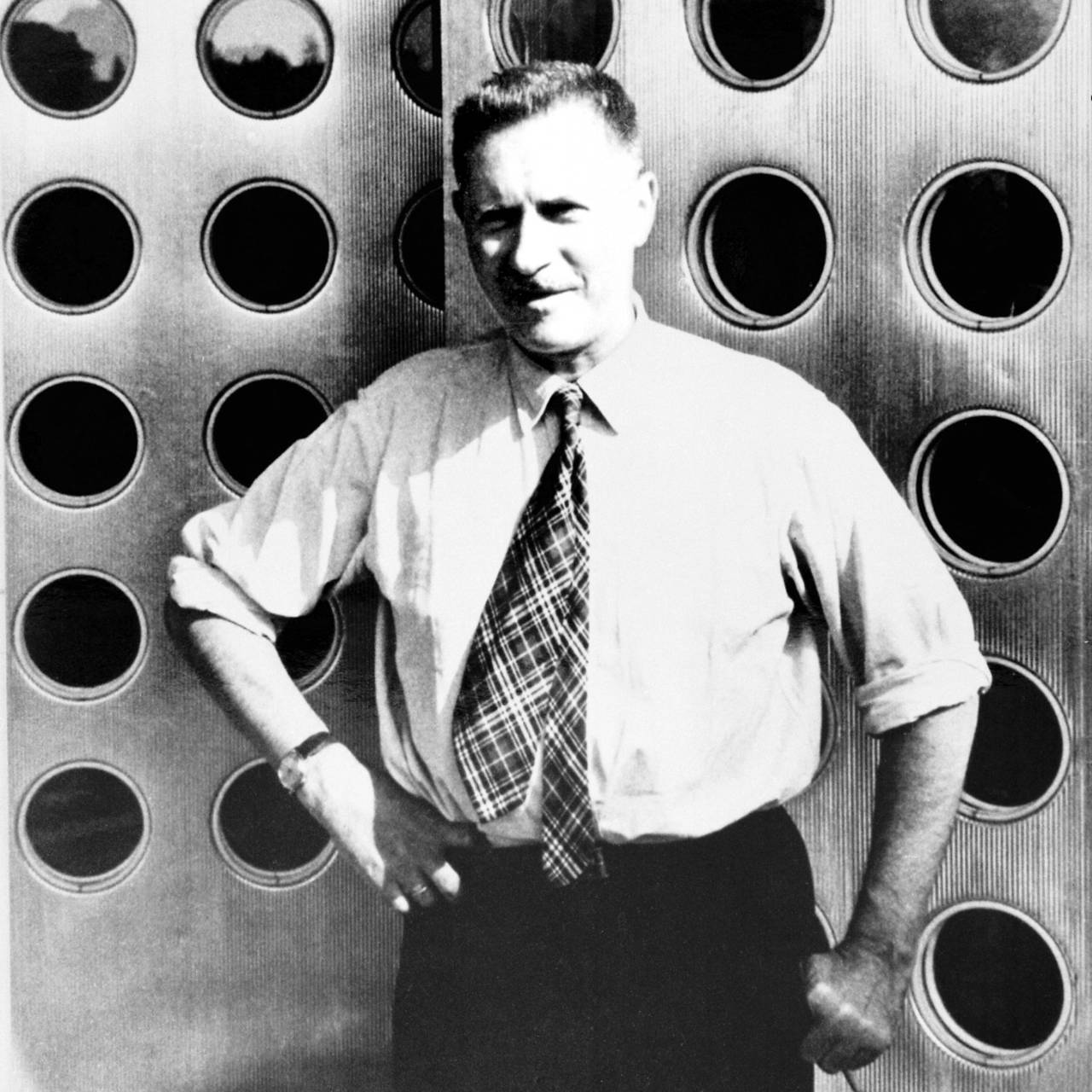Designer of the Month : Jean Prouvé
Economical and efficient
At the end of World War Two, Europe had been ravaged, leaving scars of war everywhere. None more so than in France - where for a number of years, the conflict had centred.
As an engineer and factory-owner, Jean Prouvé was well placed to make a difference. After completing his training in metal work and engineering, he had set up a workshop in his hometown of Nancy in 1924. In 1931, he set up a large factory where he was able to experiment with new materials: designing and manufacturing his own ideas.
"I'm not an architect; I'm not an engineer - I'm a factory man." - Jean Prouvé
At the outbreak of war, Prouvé became active in the resistance movement, designing bike frames and stoves that ran on any type of fuel. As the war finally came to an end, he became mayor of Nancy, and created prefabricated emergency shelters for war refugees. Prouvé was soon seen as a leader in his field. The prefabricated homes that he pioneered when working for the Ministry of Reconstruction could leave the factory semi-assembled on one truck, and took three people only one day to assemble. Working to this timeline, at one point, homes from his 300-person factory were rehousing three families a day. This was a simple but highly effective design that changed lives; Prouvé used his personal and professional means for the betterment of society. Efficiency and economy were his goals - many of his products have an element of beauty because of their stark practicality.
Perhaps his most well known design is the Standard Chair - now produced by Vitra. Its famous design is a great example of Prouvé's obsession with structural requirements. The chair's back legs are made of hollow sections of steel that transfer the user's weight to the floor. The legs' taper defines the angle of the chair's backrest. Introduced in 1934, the chair was made in Prouvé's factory, and because of wartime shortages, it was also released in editions made entirely of wood.
"This kind of designer is not striving to create a new form - the new form results from an intensive exploration of construction and technology." - Rolf Fehlbaum, Vitra Chairman
Friend of Le Corbusier and Charlotte Perriand, Prouvé was well known in the European design set as being a man of generous spirit and intricate, well thought out ideas. After his business failed in the early 1950s, Prouvé devoted himself to collaborations; pioneering the idea of glass skyscrapers built around a supportive inner core. It was known that Le Corbusier consulted him on technical issues, but often, as a self-taught designer, he was excluded from the architectural establishment.
Where in the 1930s, 40s and 50s, Prouvé's designs were ubiquitous across Europe, in the 1960s, they appeared old-fashioned. After his death in 1989, the utilitarian furniture that he designed steadily became more popular. Where his peers had produced only limited runs of their original pieces; the nature of Prouvé's furniture meant that thousands were produced at a time. There was no shortage of vintage Prouvé to sell - and so a market for it quickly developed. Where once Prouvé's work adorned the school classrooms or hospital wards, the same pieces can be found in penthouse apartments across the world over fifty years later.
Browse the works of Jean Prouvé.
Time for more? Designer of the Month : Florence Knoll | A Brief History of Furniture Styles | Best Autumn Art Exhibitions
-
Designer ProfilesIn conversation with Tom ChungRead More
Tom Chung's design practice blends simplicity, functionality, and context, creating adaptable objects that reflect how people engage with their surroundings. Recently, Muuto introduced a larger version of his Beam Table Lamp, giving it an even bolder presence. Muuto sat down...
-
Designer ProfilesIntercontinental Polymath; The Life And Work Of Isamu NoguchiRead More
One of the most acclaimed sculptors and product designers of the 20th century, Isamu Noguchi was one of the most formidable figures in design in the years following the Second World War. A sculptor by trade, Isamu Noguchi was born...
